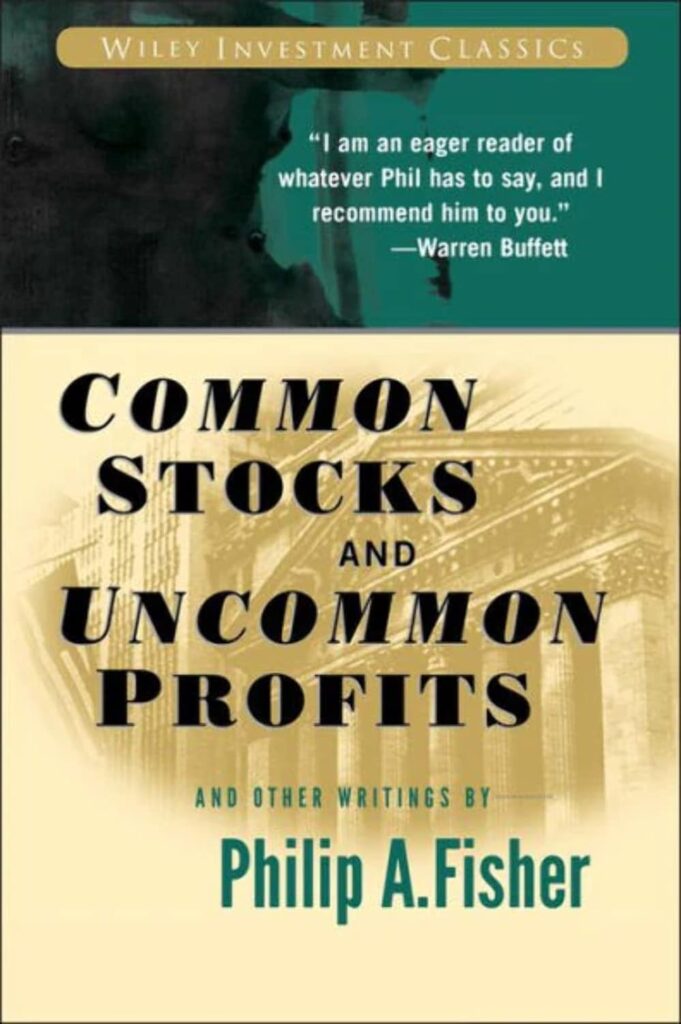Philip Fisher’s “Fifteen Points to Look for in a Common Stock”
American stock investor Philip Arthur Fisher (September 8, 1907 – March 11, 2004) was best known as the author of the investment guide book Common Stocks and Uncommon Profits. The book has the reputation of staying in print since it was first published in 1958.
Among his best-known followers is Warren Buffett who on some occasions was reported to have said that “he is 85% (Benjamin) Graham and 15% (Philip) Fisher”.
Warren Buffett called Phillip Fisher “a respected investor and author” in a letter to Berkshire Hathaway shareholders.
Fisher’s famous “Fifteen Points to Look for in a Common Stock” from “Common Stocks and Uncommon Profits” are seen as a qualitative guide to finding well-managed companies with growth prospects. According to Philip Fisher, a company must qualify on most of the 15 points to be considered a worthwhile investment.
1. Does the company have products or services with sufficient market potential to make possible a sizable increase in sales for at least several years? A company aiming for a sustained period of spectacular growth needs to have products catering to large and expanding markets.
2. Does the management have a determination to continue to develop products or processes that will still further increase total sales potentials when the growth potentials of currently attractive product lines have largely been exploited? A company needs to continually develop new products to expand existing markets or to enter new ones. This is to help it maintain above-average growth over a period of decades, the reason being that all markets eventually mature.
3. How effective are the company’s research and development (R&D) efforts in relation to its size? R&D activity needs to be efficient and effective for a company to develop new products.
4. Does the company have an above-average sales organization? According to Philip Fisher, expert merchandising is essential in a competitive environment, the reason being that few products or services are so compelling that they will sell to their maximum potential.
5. Does the company have a worthwhile profit margin? Tremendous growth alone won’t do. The growth must also bring worthwhile profits to reward investors.
6. What is the company doing to maintain or improve profit margins? Philip Fisher put it this way: “It is not the profit margin of the past but those of the future that are basically important to the investor.” Higher inflation raises a company’s expenses and, coupled with competition, will compress profit margins. Eyes have to be on how a company’s strategy will reduce costs and improve profit margins over the long term.
7. Does the company have outstanding labor and personnel relations? According to Philip Fisher, happy employees are likely to be more productive. Hence a company with good labor relations tends to be more profitable than one with mediocre relations. There is no single way to measure the state of a company’s labor relations. Indications of good labor relations in a company: making efforst to settle employee grievances quickly; a company making above-average profits paying above-average wages to its employees; and attitude of top management toward employees.
8. Does the company have outstanding executive relations? A company must cultivate the right atmosphere. In companies where the founding family retains control, promotion of family members should not be at the expense of more able executives. Executive salaries should also be at least in line with industry norms. There needs to be a regular review of salaries and merited pay increases are given without the executives having to make the demand.
9. Does the company have depth to its management? Proper development of a deep pool of management talent is vital. Avoid companies where top management is unwilling to delegate crucial authority to lower-level managers.
10. How good are the company’s cost analysis and accounting controls? A company must closely track operational costs for it to be able to achieve outstanding results over the long term. Knowing precisely the cost analysis of a company is not easy but those that are exceptionally lacking are discernible and investors should steer clear of them.
11. Are there other aspects of the business, somewhat peculiar to the industry involved, which will give the investor important clues as to how outstanding the company may be in relation to its competition? The important clues vary widely among industries. Investor need to understand the success industry factors of a company and where it stands against its competitors.
12. Does the company have a short-range or long-range outlook in regard to profits? Investors need to adopt a long-range view and correspondingly should seek companies that take a long-range view on profits. A company with its eyes glued on meeting Wall Street’s quarterly earnings estimates may not go for beneficial long-term actions that dampen its short-term earnings. Management may even resort to making aggressive accounting assumptions so as to report acceptable quarterly profit figures.
13. In the foreseeable future will the growth of the company require sufficient equity financing so that the larger number of shares then outstanding will largely cancel the existing stockholders’ benefit from this anticipated growth? Seek companies with sufficient cash or borrowing capacity to fund growth. Equity offerings dilute the interests of owners.
14. Does management talk freely to investors about its affairs when things are going well but “clam up” when troubles and disappointments occur? Management must be one that reports candidly all aspects of its business, whether good or bad.
15. Does the company have a management of unquestionable integrity? Avoid a company “if there is a serious question of the lack of a strong management sense of trusteeship for shareholders.”
Recommended reading:
